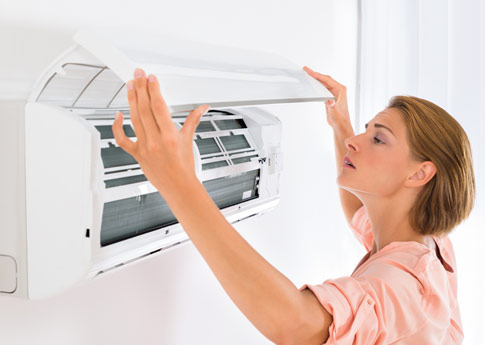How to Choose the Right Size of AC Unit for Your Home During Installation?
Choosing the right size AC unit for your home is essential for comfort and efficiency. Start by measuring your home’s square footage and ceiling height. Check your insulation’s type and condition, ensuring it is up-to-date. Consider your local climate; hotter regions may need larger units. Calculate the BTU requirements based on your home’s size and specific needs. Opt for energy-efficient models with high SEER ratings to save on utility bills. Finally, consult an HVAC professional for a detailed load calculation and personalized recommendations. To grasp all the essential details for your air conditioner installation, continue on.
Assess Your Home’s Square Footage
To determine the right size of AC unit, you first need to measure your home’s square footage accurately. Start by measuring the room dimensions of each room you plan to cool. Use a tape measure to record the length and width of each room. Multiply these two numbers to get the square footage for each room. For example, if your living room is 12 feet by 15 feet, the square footage is 180 square feet.
Next, consider the ceiling height. Standard ceiling heights are usually around 8 feet, but if your ceilings are higher, you’ll need to account for the extra volume. Higher ceilings mean more air space that needs to be cooled. To adjust for this, you can multiply your total square footage by a factor that represents the increased ceiling height. For instance, if your ceilings are 10 feet high, multiply the square footage by 1.25 to get a more accurate measure.
After you’ve calculated the square footage and adjusted for ceiling height, add up the total square footage for all rooms you want to cool. This total will give you a solid foundation for choosing the right size AC unit for your home.
Evaluate Insulation Quality
To guarantee your AC unit works efficiently, begin by evaluating the type of insulation in your home.
Next, inspect for drafts around windows and doors that could impact cooling performance.
Assess Insulation Type
 Understanding your home’s insulation type is vital because it directly impacts your AC unit’s efficiency and performance. Different insulation materials, like fiberglass, spray foam, or cellulose, offer varying degrees of thermal resistance. You need to know what kind of insulation installation was used throughout your home. This knowledge helps you determine how well your home retains cool air and blocks out heat, which is essential for selecting the right size of AC unit.
Understanding your home’s insulation type is vital because it directly impacts your AC unit’s efficiency and performance. Different insulation materials, like fiberglass, spray foam, or cellulose, offer varying degrees of thermal resistance. You need to know what kind of insulation installation was used throughout your home. This knowledge helps you determine how well your home retains cool air and blocks out heat, which is essential for selecting the right size of AC unit.
Start by examining commonly insulated areas such as your attic, walls, and basement. Check the thickness and condition of the insulation materials. If your insulation is outdated or damaged, it mightn’t perform effectively, leading to higher energy consumption and reduced AC performance. Modern insulation materials like spray foam provide better thermal resistance and can significantly improve your home’s energy efficiency.
Once you’ve identified the type and condition of your insulation, you can make a more informed decision about your AC unit. Proper insulation installation ensures that your AC unit doesn’t have to work overtime to maintain a comfortable temperature, thereby saving you money on energy bills and prolonging the lifespan of your system.
Check for Drafts
Spotting drafts in your home is crucial for evaluating insulation quality and guaranteeing your AC unit operates efficiently. Drafts can force your AC unit to work harder than necessary, spiking your energy bills and reducing comfort.
Start by checking the door seals. Close each door and feel along the edges for any cool air seeping through. Worn or damaged seals can let in drafts, so replace them if needed.
Next, inspect your window caulking. Over time, caulking can crack and shrink, creating gaps that allow air to pass through. Run your hand along the edges of your windows to detect any drafts. If you feel a breeze, it’s time to reapply caulking. Make sure to remove the old, damaged caulk before applying a new layer for the best results.
Don’t forget about other potential draft sources like electrical outlets, baseboards, and attic hatches. Seal these areas with appropriate materials to ensure thorough insulation.
Measure R-Value
Knowing the R-Value of your home’s insulation helps you evaluate its effectiveness in keeping cool air in and hot air out. R-Value measures how well insulation material can resist heat flow. The higher the R-Value, the better your insulation will perform.
First, check your insulation thickness. Thicker insulation generally offers a higher R-Value, meaning it will do a better job of maintaining your home’s temperature. For instance, attic insulation should ideally be about 10 to 14 inches thick, depending on the insulation material used.
Next, consider the type of insulation material. Different materials have different R-Values per inch. Fiberglass, cellulose, and spray foam are common options.
Fiberglass batts usually have an R-Value of about 3.2 to 3.8 per inch, while cellulose can range from 3.1 to 3.8 per inch. Spray foam, on the other hand, can offer R-Values as high as 6.5 per inch.
Understand Local Climate
When selecting an AC unit, it’s essential to take into account your local climate. You need to factor in temperature extremes, seasonal variations, and humidity levels. These factors directly impact the unit’s efficiency and effectiveness in cooling your home.
Understanding your local climate will help you choose an AC unit that is suitable for your specific needs. It’s crucial to consider not only the average temperatures but also the fluctuations throughout the year. This information will ensure that you select an AC unit that can handle the demands of your climate.
Temperature Extremes Matter
Understanding your local climate is vital because temperature extremes directly affect the size of the AC unit you’ll need. If you live in an area that experiences extreme temperatures, whether it’s sweltering summers or bitterly cold winters, your AC unit has to work harder to maintain a comfortable indoor environment.
In regions with thermal extremes, the demand on your AC unit increases, meaning you may need a larger, more powerful system to achieve the desired cooling effect.
When choosing an AC unit, it’s imperative to take into account how often and how severely your area experiences these extreme temperatures. For instance, if you live in a desert climate with soaring summer highs, your AC unit must be robust enough to handle prolonged periods of intense heat.
On the other hand, in a locale where temperature swings are common, you’ll need a system that can efficiently manage those fluctuations.
Seasonal Variations Impact
Your AC unit’s efficiency and size requirements are heavily influenced by seasonal variations in your local climate. When choosing the right size, you need to take into account how the weather patterns in your area fluctuate throughout the year. If your region experiences significant temperature changes between seasons, your AC unit must handle both the peak highs of summer and the potential mildness of other seasons. This guarantees comfort all year round.
Understanding your seasonal preferences is essential. Do you prefer a cooler home during hot summer months or just a mild cooling effect? Knowing this helps tailor the AC unit size to your exact needs. For instance, a region with scorching summers will demand a larger unit compared to an area with moderate summer temperatures.
Weather patterns also play a significant role. If your area experiences frequent heatwaves or unpredictable temperature spikes, opting for a slightly larger unit might be wise to maintain consistent comfort. Conversely, if your weather is relatively stable, a moderately sized unit might suffice.
Humidity Levels Consideration
Evaluating the humidity levels in your local climate is vital for selecting the right AC unit size. When you know how humid your area gets, you can better address moisture control in your home. High humidity can make your space feel warmer than it actually is, which means your AC unit needs to work harder. Hence, understanding your dehumidification needs is important.
If you live in a humid climate, you’ll want an AC unit that not only cools but also effectively removes excess moisture from the air. Units with built-in dehumidifiers can be particularly beneficial. However, keep in mind that not all AC units are equally efficient in handling high humidity.
Larger units might cool your home quickly but won’t run long enough to effectively dehumidify, leaving your home feeling clammy.
On the other hand, if your local climate is dry, focusing on dehumidification needs may not be as critical. In such cases, you can prioritize other factors like energy efficiency and cooling capacity.











 Now, you can easily incorporate eco-friendly practices into your manufacturing and supply chain, but what about your business cards? You should know that
Now, you can easily incorporate eco-friendly practices into your manufacturing and supply chain, but what about your business cards? You should know that